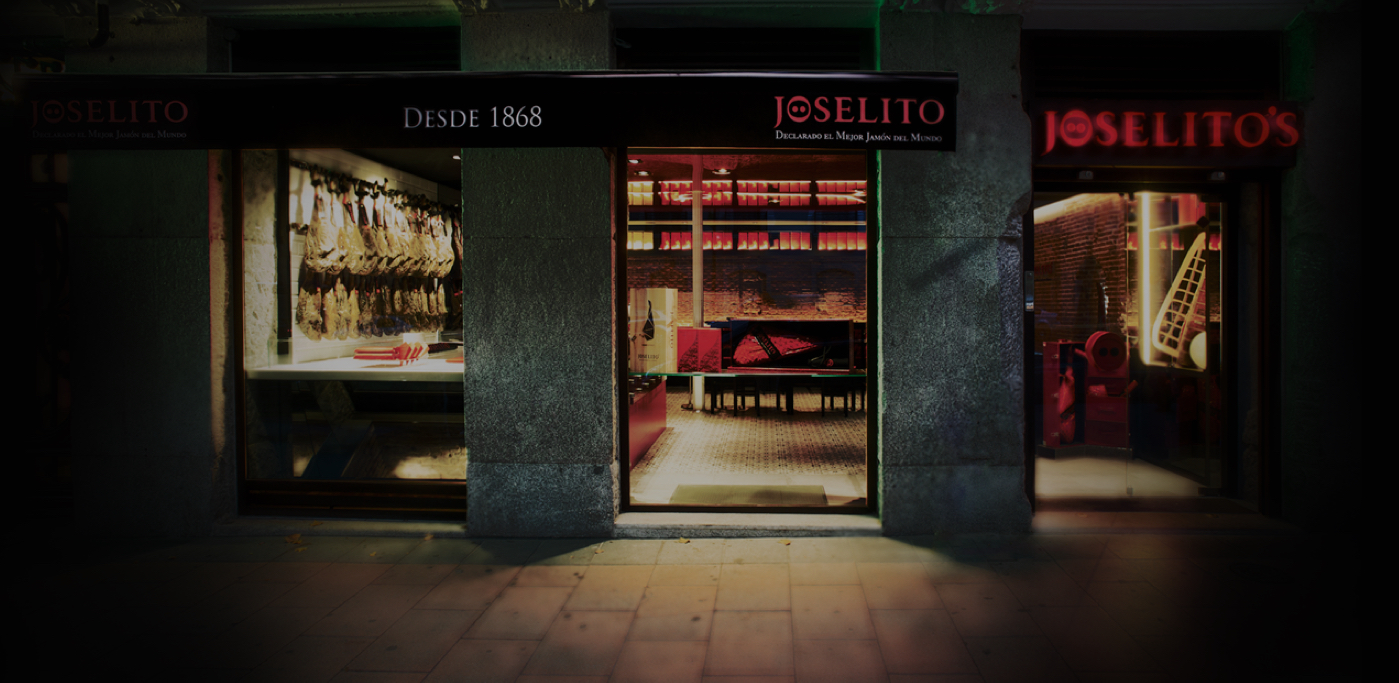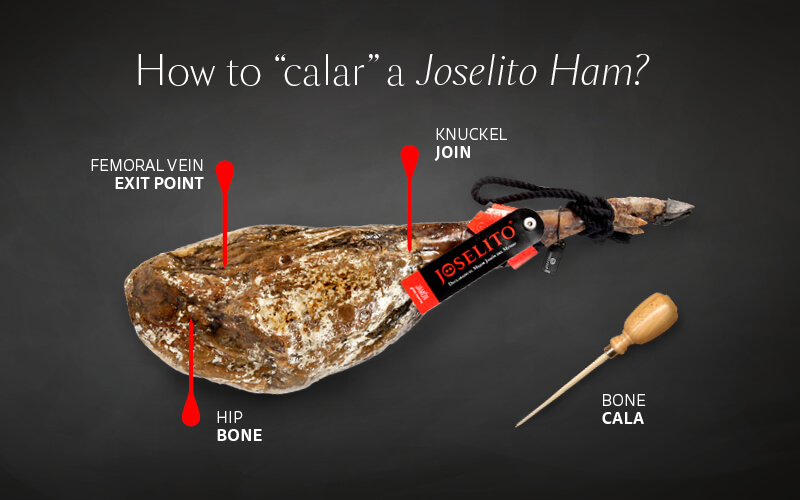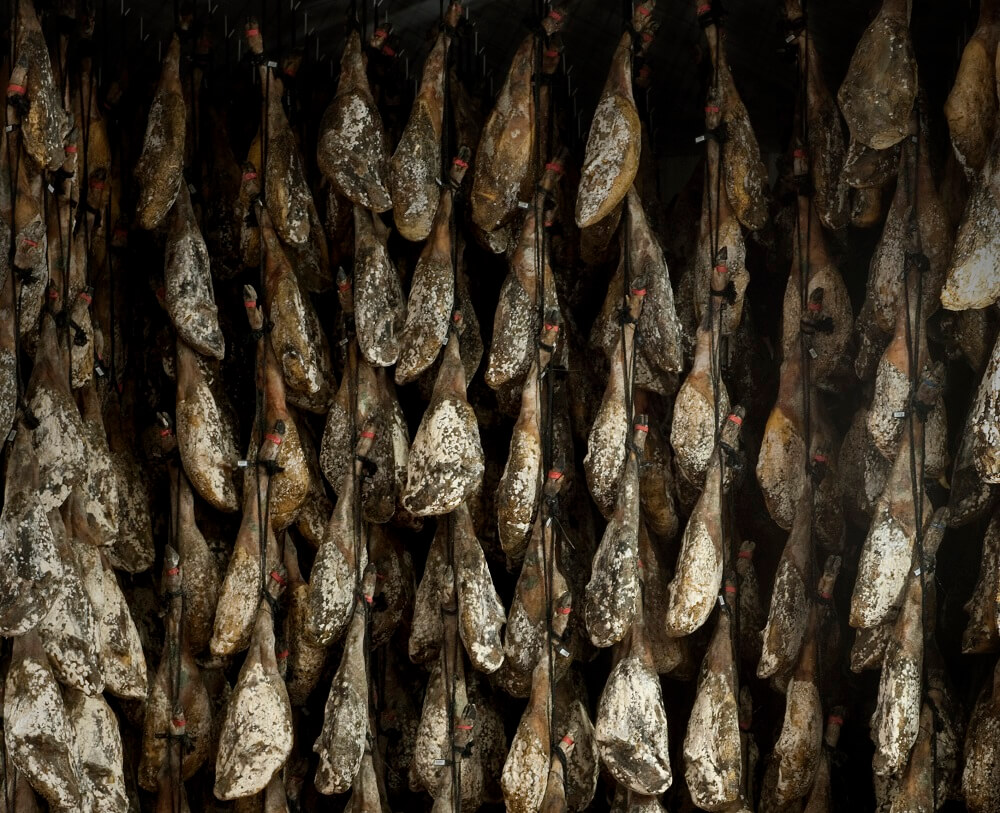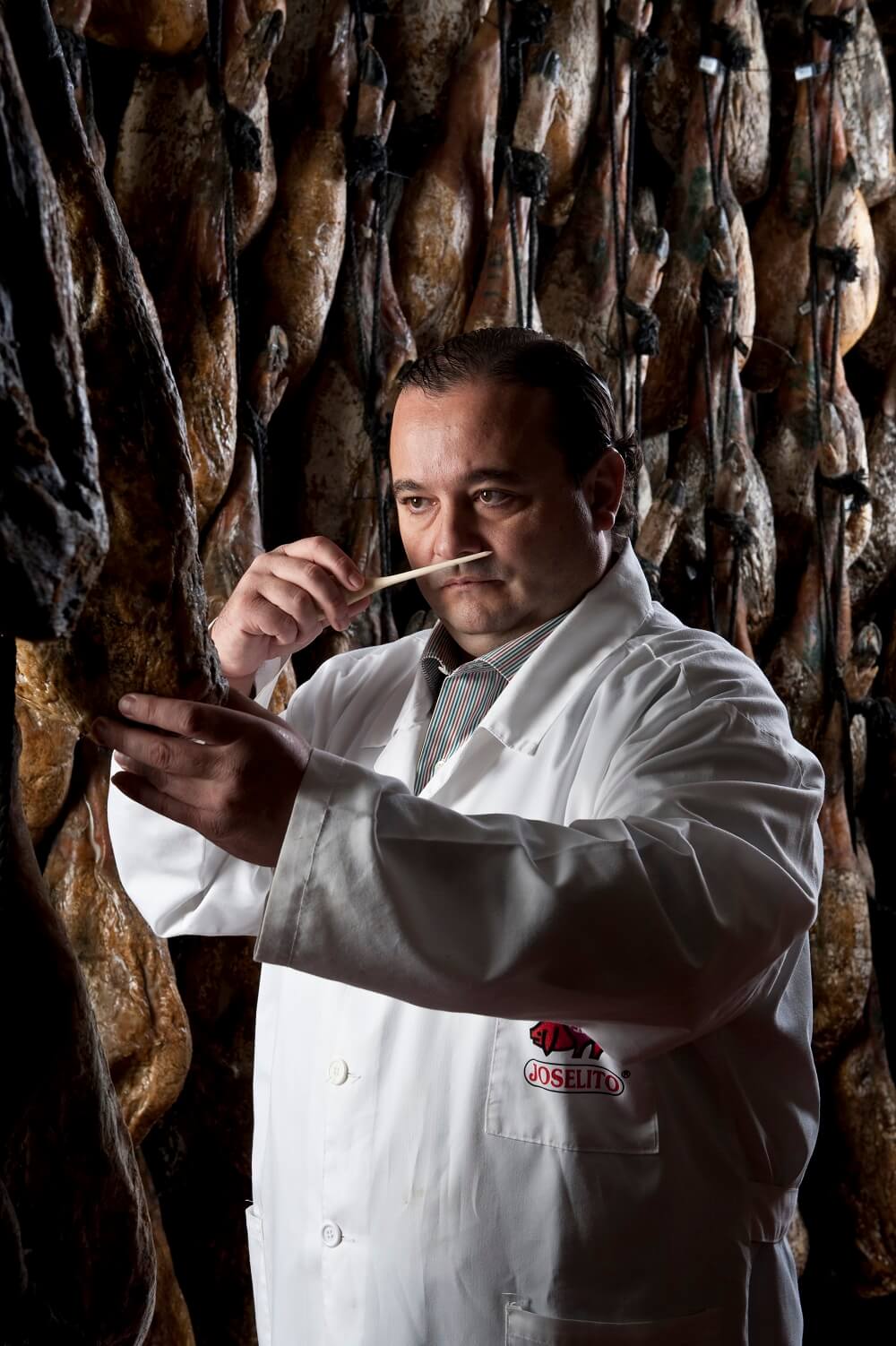

Is it possible to select the best hams by only using your sense of smell? Yes, it is possible without having to cut it and without resorting to tasting it. This is done through the intricate art of ‘cala’ (testing for quality). ‘Cala’ consists of knowing whether a ham is ready to be eaten through a complicated technique that is for expert noses only, and which is carried out by a master ham cutter or master “calador” (tester) with the aim of analyzing the organoleptic qualities of the ham.
The curing process of ham requires patience and care. And acorn-fed Iberian hams are the ones that require a longer curing time, at least 36 months. The climate dictates the time. Guijuelo, in Salamanca, is known for its air currents from the mountain range which produce excellent hams. Joselito Hams and Shoulders are dried in natural dryers in Guijuelo, using the age-old technique of opening and closing windows as required, depending on the temperatures.
After drying, the hams are moved to a cellar in order to complete the curing process in a cool dark place for twelve to eighteen months. The cellar remains at a temperature of between 14 and 16°C and a relative humidity of between 40 and 60%. During curing the proteins and fat undergo a slow transformation process. This gradual process is essential for the ham to become more digestible and appetizing. The loss of weight of the ham during the curing process can reach up to between 33 and 36%. The checks to ensure that the ham is at its peak of maturity and in perfect condition before it is sold are carried out using a traditional and very old method: the ‘calado’ (piercing) of the ham.

The ‘cala’ is performed as close to the consumption date of the ham as possible and is used to verify the quality, degree of curing, salt level, whether there has been any alteration to the product and ultimately, the suitability of the piece for consumption. The test consists of the master ham cutter inserting a thin “cala” (spike) of around 12 cm in length, made of cow or horse bone into several parts of the piece. After extracting it, the master ham cutter or ‘calador’ checks that the intensity and aroma -characteristic of the area of production- given off by the ham are correct. The ‘cala’ allows us to evaluate whether the ham is ready, especially in the more delicate areas -the joints- and to detect whether we have a product which has fermented unusually. If after the ‘cala’ process defects are detected in the ham, it will not be sold.
During the ham ‘calado’ process, three incisions are usually made, driving the instrument up to a depth of between 1.5 and 3 cm, depending on where the incision is made. It is necessary to know the exact point at which to insert the ‘cala’, control the depth at which this is done and to perform the action rapidly and precisely, as the ‘cala’ becomes impregnated instantly with the aroma of the ham and should not be left inside longer than is necessary.
The three ‘cala’ points are: the join of the femur and the hip, the femoral vein exit point, and the third, the join of the tibia and fibula with the femur. Once the ‘cala’ is extracted, the different aromas given off are analyzed. It is very important to quickly cover any possible orifices generated with fat from the ham so that they may scar over and not damage the ham.
The ‘cala’ is a very complex process and it is necessary to have an excellent and highly developed sense of smell developed through experience, therefore, we offer you a few key points about how to ‘calar’ the quality of a ham, but we do not advise trying it at home as the hams are already tested at the factory before being sold, and there is a risk of damaging them. The only thing that needs to be done in the home is to taste it and enjoy it. Likewise, it’s always good to be attentive to the traits which are visible at first sight, which define and highlight the value of acorn-fed Iberian ham: The long and slender leg, the white and unctuous fat, the marbled effect caused by the fat seeping into the muscle, the shine of the meat, and even though you might not have an expert nose in ‘calado’, the intense and aromatic fragrance of the ham.

